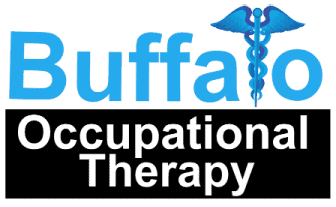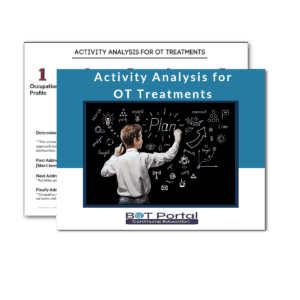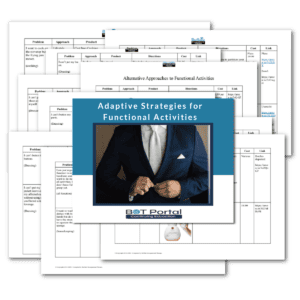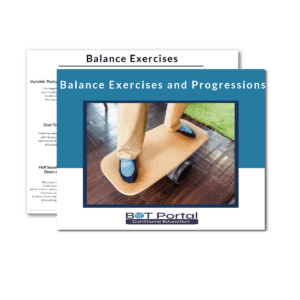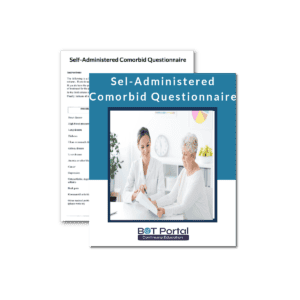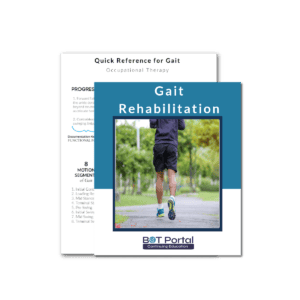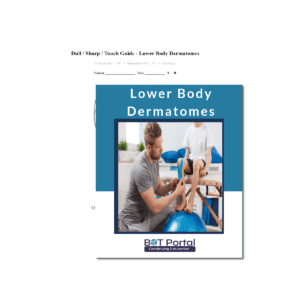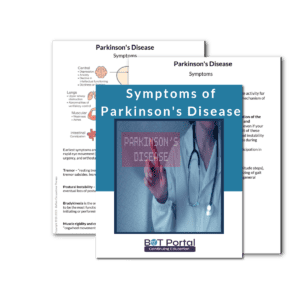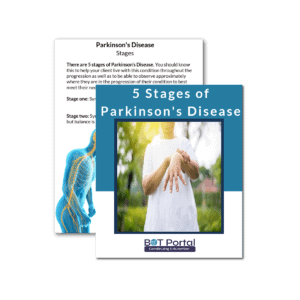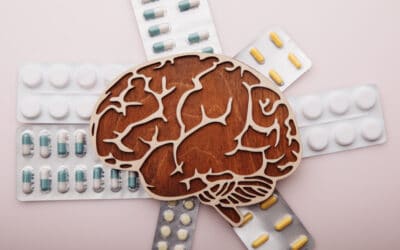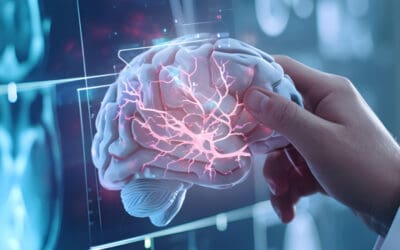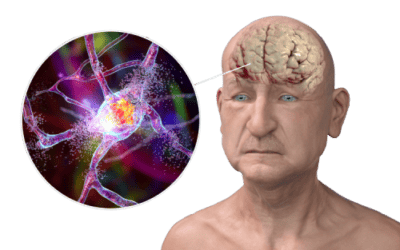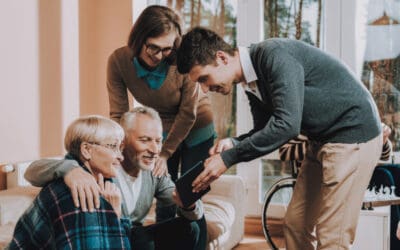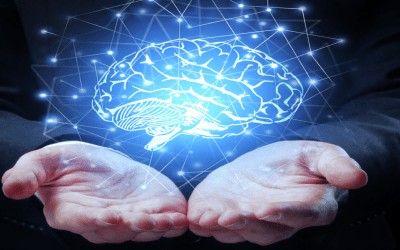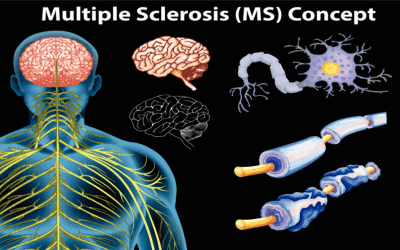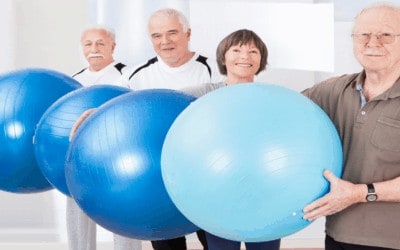
Stop feeling insecure and lost.
Don't wait for BURNOUT to consume your life because there just isn't enough time for professional development or searching for evidence-based information and training for daily clinical treatments.
Join the BOT Rehabilitation Resource Portal and Receive 24/7 access to the highest quality resources designed by an experienced therapist speciically for busy, motivated, and passionate therapists and therapy assistants.


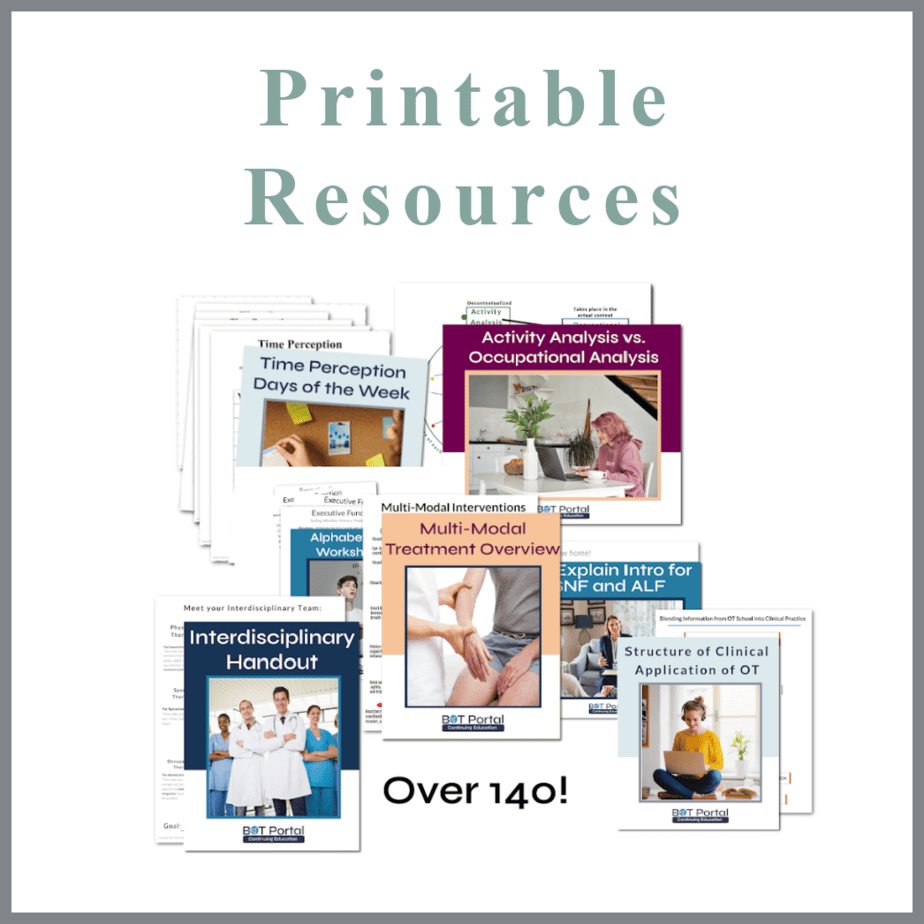

Membership Perks
What is included?
Your investment gives you resources to save you stress, self-doubt, and burnout as you become a confident and competent practitioner who can stand up for your professional point of view and scope of practice.
General:
Occupational therapy practitioner CAN treat the lower body! In fact, in many ways, an occupational therapy practitioner is the BEST practitioner to take lead on lower body rehabilitation and restorative therapy. Despite what you may have learned…or maybe never learned in school…an occupational therapy practitioner should know just as much, if not more about the lower body as they do about the upper body! Occupational therapy practitioners treat the entire body! If your patient wants to do any of the activities found within the 8 domains of occupational therapy, they will need their occupational therapy practitioner to address mobility including restoring function, restoring structures, enhancing performance skills, and maximizing independence. This is a continuum!
So what are some things an occupational therapy practitioner can do for the lower body?
Assign & Train
Assigning and training an Adaptive Equipment and Duable Medical Equipment
Increase safety and efficiency of gain or standing
Prevent deformity or impairment
Determine wheelchair and seating needs
Determine walker, care, mobility aid
ASSESS
Assessing gait, posture, and body mechanics to restore musculoskeletal and neuromuscular function
Gait– manner a person walks
Ambulation – process of moving from place to place
[Necessary] for interdisciplinary or multidisciplinary apprach to rehabilitation
REMEDIATION [Balance]
Remediation of balance and integration of effective weight shifting bilaterally
Achieving equilibrium without acceleration
Increasing standing tolerance in varying degrees of COG displacement
Stability during dynamic weight shift required BUE AROM
Stability during any activity meaningful to your patient
REMEDIATION [Transitional]
Remediation/Restoring Transitional Movements
Moving from one position to another with varying degrees of extraneous cognitive load and contextual factors
Examples:
- Sit to stand
- Stand to sit
- supine to sit to stand
- stand to sit to supine
- sit to stand – pivot [parallel or perpendicular- stand to sit
Assessments to use in Evaluation and Progress Notes:
- BERG Balance Assessment
- Timed Up and Go
- 5 Times Sit to Stand
- 10ft Tandem Line
- Modified Falls Efficacy Scale
- Lower Extremity Functional Scale (LEFS)
- Brief Pain Inventory
- ABC Balance Scale
- Tinnetti Gait and Balance
- Gait analysis Checklist
Common Problems in the Lower Extremity
Foot Drop
- Difficulty or inability for dorsiflexion
- Reduced knee function, hip flexion, and ankle dorsiflexion all may affect clearing during foot swing
- If untreated, client can develop a nonfunctional gait pattern, be at risk for falls. And further functional decline.
- Can cause hip circumduction
- What muscle is affected?
-
-
- Common peroneal nerve, common fibular nerve
- Branches off the sciatic nerve, lumbosacral plexus, and the L5 nerve root proximally
- Innervates anterior tibialis muscle
- What can cause this diagnosis?
-
-
-
- Neurological damage in CNS / PNS
- Diabetes mellitus
- Tumors
- Motor neuron disease
- MS
- Adverse reactions to drugs and alcohol
- Treatment
-
- Surgical Intervention
- Modalities
- Strengthening and movement therapy
- Motor re-learning strategies
- AFO management
-
-
-
-
-
-
Circumduction
- During hip swing the pelvis hikes while the hip abducts on the unsupported side
- The leg advances in a circular motion out to the side
- Decreases safety, increases energy expenditure, decreases movement options for the development of more functional gait patterns
Hemiplegic Gait
**New Research suggests that reciprocal arm swing has very little effect on gait efficiency**
- Foot drop
- Synergy pattern: hip adduction, hip extension, hip medial rotation, knee extension, ankle plantar flexion, and ankle inversion
- Slow speed, short stance phase, poorly coordinated movements, and decreased weight bearing on the affected extremity
- The trunk muscles may by hypertonic restricting normal pelvic forward rotation during gait
Browse the Resource Store!
Don't want to pay for each PDF individually? No problem! The BOT Portal Membership comes with all printable resources and more!
Treatment Video Links
Alzheimer’s Disease Medications
Dementia Treatments Alzheimer's Disease MedicationIntroduction People are increasingly interested in the latest advancements in Alzheimer's disease medications as they seek to safeguard their brain health through the most cutting-edge scientific developments....
The Neurological Therapist – Interview your therapist
One crucial aspect of our practice is understanding the nuances between different treatment modalities and knowing when to apply each one effectively.
Understanding the Difference: Therapeutic Exercise, Therapeutic Activity, and Neuromuscular Re-education in Occupational Therapy
One crucial aspect of our practice is understanding the nuances between different treatment modalities and knowing when to apply each one effectively.
Stages of Alzheimer’s Disease
Alzheimer’s disease progresses through several stages, each presenting its own set of challenges for both the individual and their loved ones. In the early stages, memory lapses and difficulty with familiar tasks may be subtle, but as the disease advances, symptoms become more pronounced. In the middle stages, confusion and disorientation become more frequent, and individuals may require assistance with daily activities. Finally, in the late stages, communication becomes extremely limited, and round-the-clock care is often necessary. Understanding these stages can help families better navigate the journey of Alzheimer’s, providing support and planning for the road ahead.
Warning Signs of Dementia
It is difficult to tell the difference between memory loss in normal aging and warning signs of dementia, but there are several common findings that may serve as a warning sign that something deeper may be happening than normal aging.
Early Signs of Dementia in Women
“Memory is the treasure house of the mind wherein the monuments thereof are kept and preserved”. Thomas Fuller Early signs of dementia in women:Early: This refers to the beginning stages or the initial phase of something. In the context of "early signs of dementia,"...
Traumatic Brain Injury Rehabilitation
Traumatic Brain Injury Rehabilitation Authored by Michelle Eliason, MS, OTR/L, CKTS, C.D.S.What is a Traumatic Brain Injury (TBI)A traumatic brain injury (TBI) can occur after a fall, sport injury, motor vehicle accident, blunt force trauma, accident at work, or any...
Lewy Body Dementia and Rehabilitation
Lewy Body Dementia and Rehabilitation Authored by Michelle Eliason, MS, OTR/L, CKTS, C.D.S.What is Lewy Body Dementia?Lewy Body Dementia (LBD) is the second most prevalent progressive neurodegenerative diagnosis causing dementia. It is second to Alzheimer's disease...
Multiple Sclerosis and Rehabilitation
Multiple Sclerosis and Rehabilitation Authored by Michelle Eliason, MS, OTR/L, CKTS, C.D.S.Common Symptoms of Multiple SclerosisMultiple sclerosis (MS) is a neurodegenerative disease affecting the central nervous system (brain and spinal cord). During the progression...
Parkinson’s Disease
Parkinson's Disease Treatment Parkinson's Disease Therapy and Management Parkinson's Disease treatment; Parkinson's Disease therapy; PD; Parkinson's Physical TherapyCommon Symptoms of Parkinson's DiseaseParkinson's disease is the second most common neurodegenerative...
Alzheimer’s Disease Medications
Dementia Treatments Alzheimer's Disease MedicationIntroduction People are increasingly interested in the latest advancements in Alzheimer's disease medications as they seek to safeguard their brain health through the most cutting-edge scientific developments....
The Neurological Therapist – Interview your therapist
One crucial aspect of our practice is understanding the nuances between different treatment modalities and knowing when to apply each one effectively.
Understanding the Difference: Therapeutic Exercise, Therapeutic Activity, and Neuromuscular Re-education in Occupational Therapy
One crucial aspect of our practice is understanding the nuances between different treatment modalities and knowing when to apply each one effectively.
Stages of Alzheimer’s Disease
Alzheimer’s disease progresses through several stages, each presenting its own set of challenges for both the individual and their loved ones. In the early stages, memory lapses and difficulty with familiar tasks may be subtle, but as the disease advances, symptoms become more pronounced. In the middle stages, confusion and disorientation become more frequent, and individuals may require assistance with daily activities. Finally, in the late stages, communication becomes extremely limited, and round-the-clock care is often necessary. Understanding these stages can help families better navigate the journey of Alzheimer’s, providing support and planning for the road ahead.
Warning Signs of Dementia
It is difficult to tell the difference between memory loss in normal aging and warning signs of dementia, but there are several common findings that may serve as a warning sign that something deeper may be happening than normal aging.
Early Signs of Dementia in Women
“Memory is the treasure house of the mind wherein the monuments thereof are kept and preserved”. Thomas Fuller Early signs of dementia in women:Early: This refers to the beginning stages or the initial phase of something. In the context of "early signs of dementia,"...
Traumatic Brain Injury Rehabilitation
Traumatic Brain Injury Rehabilitation Authored by Michelle Eliason, MS, OTR/L, CKTS, C.D.S.What is a Traumatic Brain Injury (TBI)A traumatic brain injury (TBI) can occur after a fall, sport injury, motor vehicle accident, blunt force trauma, accident at work, or any...
Lewy Body Dementia and Rehabilitation
Lewy Body Dementia and Rehabilitation Authored by Michelle Eliason, MS, OTR/L, CKTS, C.D.S.What is Lewy Body Dementia?Lewy Body Dementia (LBD) is the second most prevalent progressive neurodegenerative diagnosis causing dementia. It is second to Alzheimer's disease...
Multiple Sclerosis and Rehabilitation
Multiple Sclerosis and Rehabilitation Authored by Michelle Eliason, MS, OTR/L, CKTS, C.D.S.Common Symptoms of Multiple SclerosisMultiple sclerosis (MS) is a neurodegenerative disease affecting the central nervous system (brain and spinal cord). During the progression...
Parkinson’s Disease
Parkinson's Disease Treatment Parkinson's Disease Therapy and Management Parkinson's Disease treatment; Parkinson's Disease therapy; PD; Parkinson's Physical TherapyCommon Symptoms of Parkinson's DiseaseParkinson's disease is the second most common neurodegenerative...
